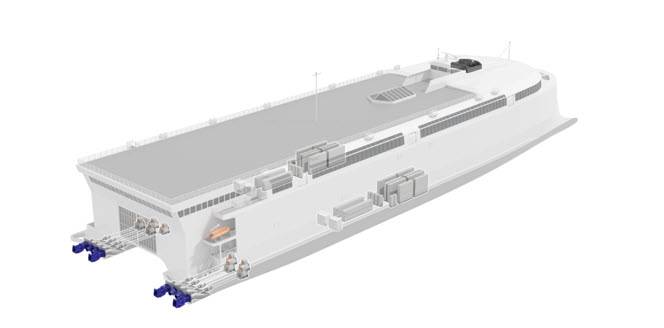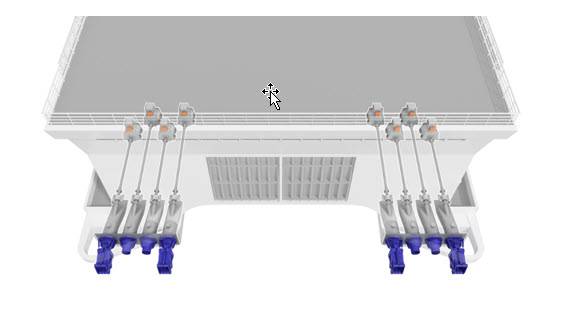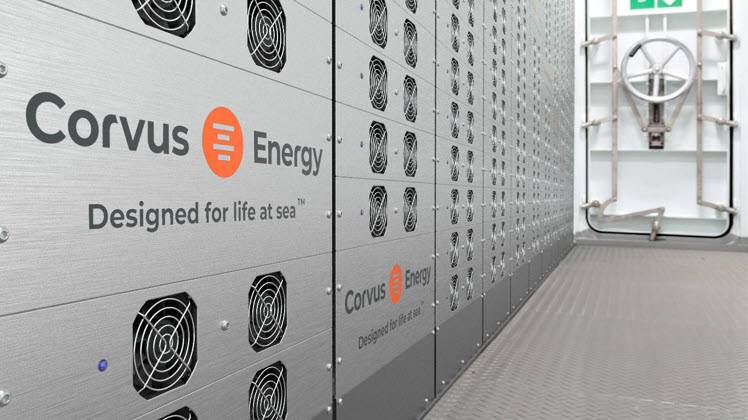Incat Tasmania to Deliver World’s Largest Battery Electric Ship
Australian shipbuilder Incat Tasmania is setting a record for the largest, lightweight battery electric ship in the world with a new 130-meter (427-foot) ro-pax ferry under construction for South American customer, Buquebús.
The aluminum ferry will be the first fully electric vessel in South America when delivered in 2025, operating between Argentina and Uruguay. It will have a capacity for 2,100 passengers and crew and 225 cars and will feature a duty free shop of over 2,000 square meters (21,500 square feet).
The vessel will sail on the longest zero-emission journey, at the highest speed, and will be charged with the world’s highest capacity chargers. Once in operation the shoreside charging systems will have 50% more capacity than any current installation worldwide. The onboard energy storage system (ESS), at over 40MWh, will be four times larger than any battery installation that has been installed anywhere in the world for the marine transport environment.
The batteries will power a series of E-motors which drive a water jet propulsion system specially designed for shallow water operation. The project has been made possible by Corvus’s latest technological breakthrough– the lightweight battery, Dolphin NextGen, which features a rackless battery configuration that will weigh less than half of what its standard technology would weigh. Corvus has therefore achieved a high energy density, just under six kilo per kilowatt hour.
The ESS will be deployed across four battery rooms and will provide power to electric motors that will power a unique eight waterjet propulsor configuration from Wärtsilä. Eight waterjets, four steerable and four booster jets, were chosen to meet the shallow water operation requirements set for the vessel, rather than having fewer, larger waterjets.
The full Wärtsilä scope of supply includes Wärtsilä’s own energy management system, the power conversion system, DC shore charging system, the 40MWh battery modules, the DC hub, the eight electric motors, eight Wärtsilä axial flow WXJ1100 waterjets, and the ProTouch propulsion control system.
“The eight e-motor waterjet propulsion configuration is the most efficient available on today’s market for this speed range and type application while boasting all the benefits from Wärtsilä’s axial flow waterjet technology – low weight, shallow draft, superb manoeuvrability, and low maintenance,” says Roger Holm, President of Wärtsilä’s Marine Power business.
As Tasmania has already achieved overall net zero emissions, we are the only location on the planet that is able to construct zero-emission, battery electric ships in an already net zero emissions environment for our customers, says Incat Managing Director Craig Clifford.
“We're looking at quite a number of projects at the moment, and in five years’ time, we might not consider this a big project at all,” said Robert Clifford, Incat Chairman.
















